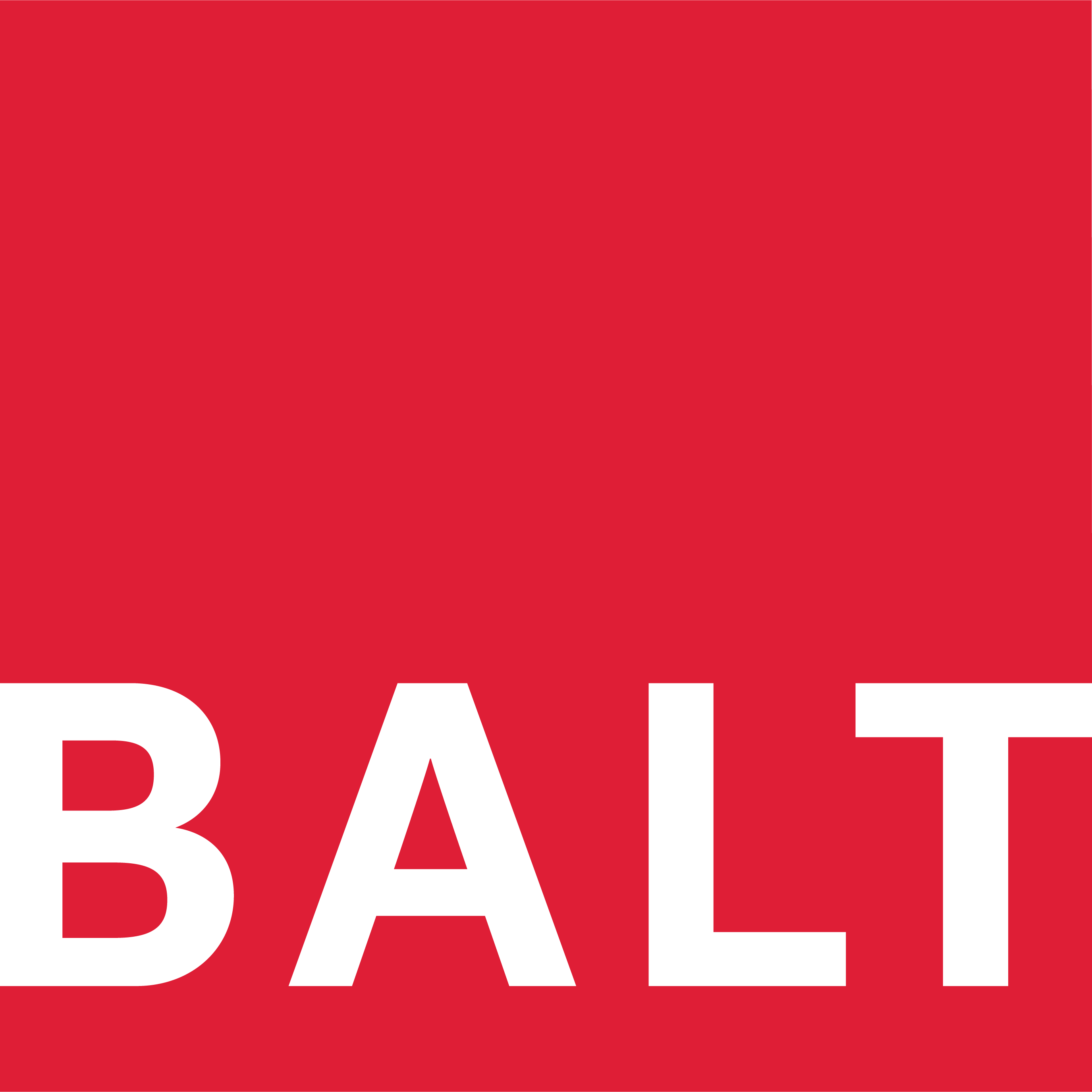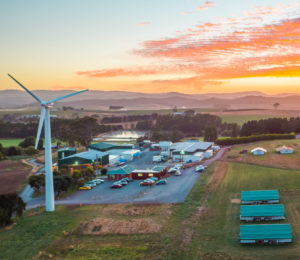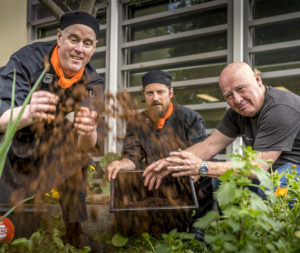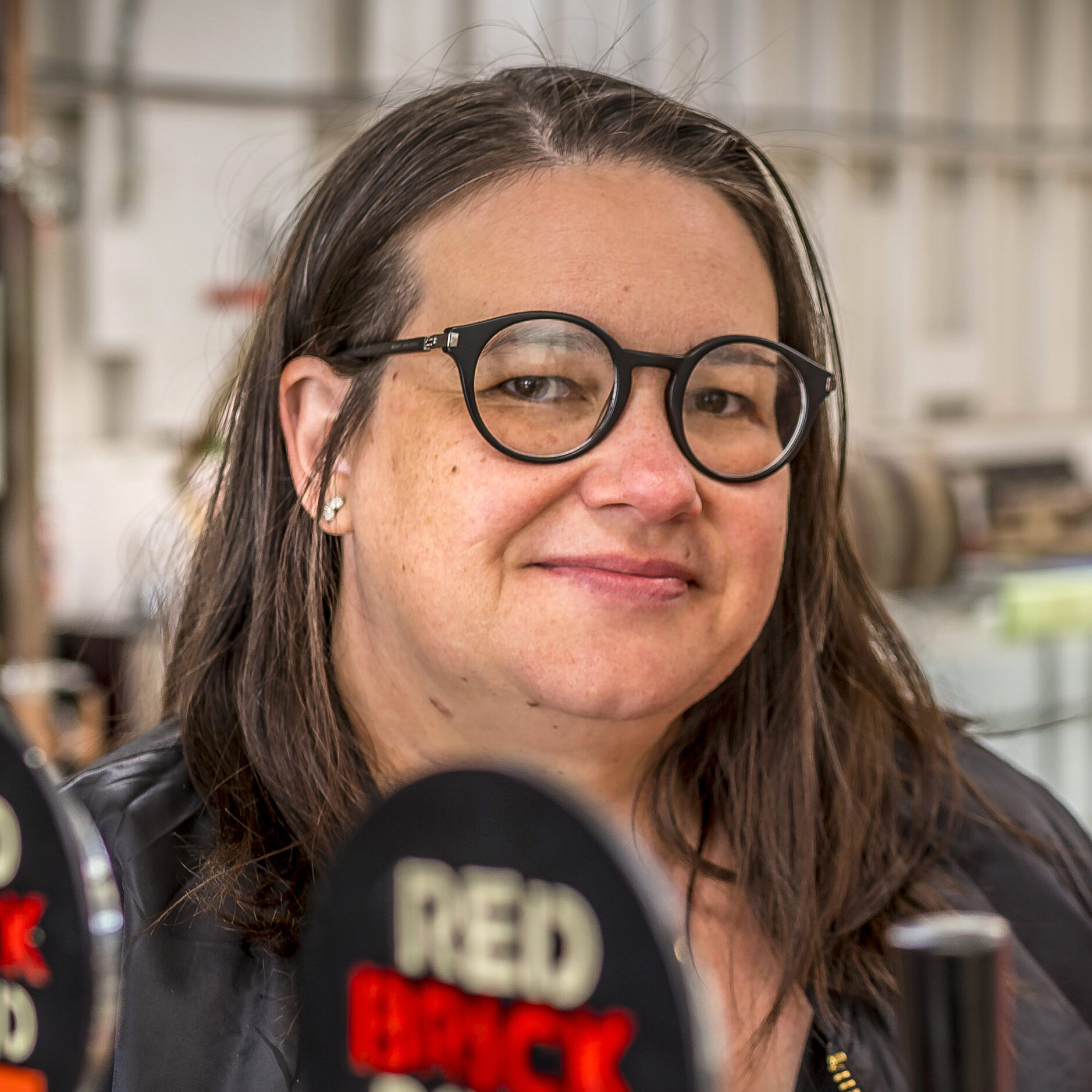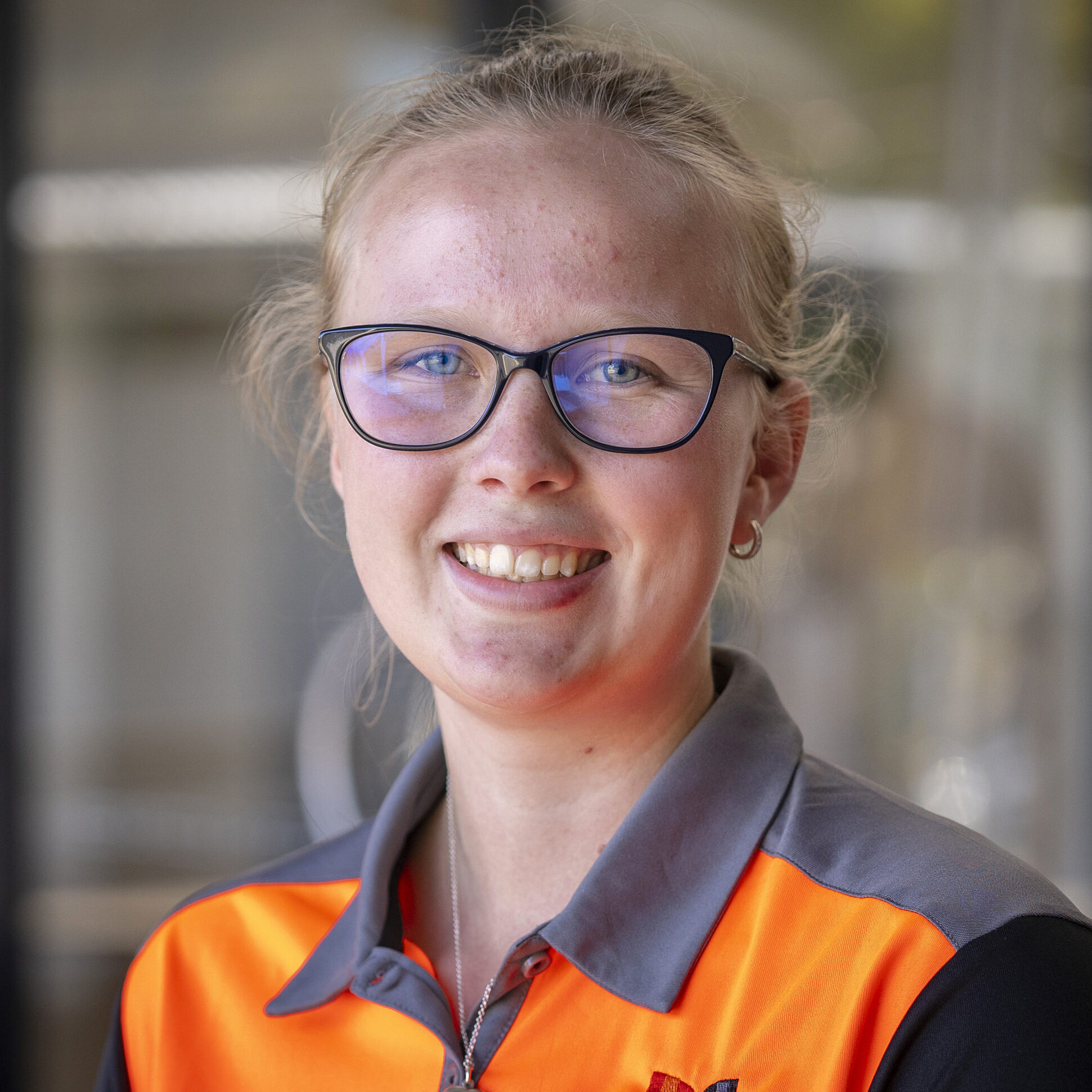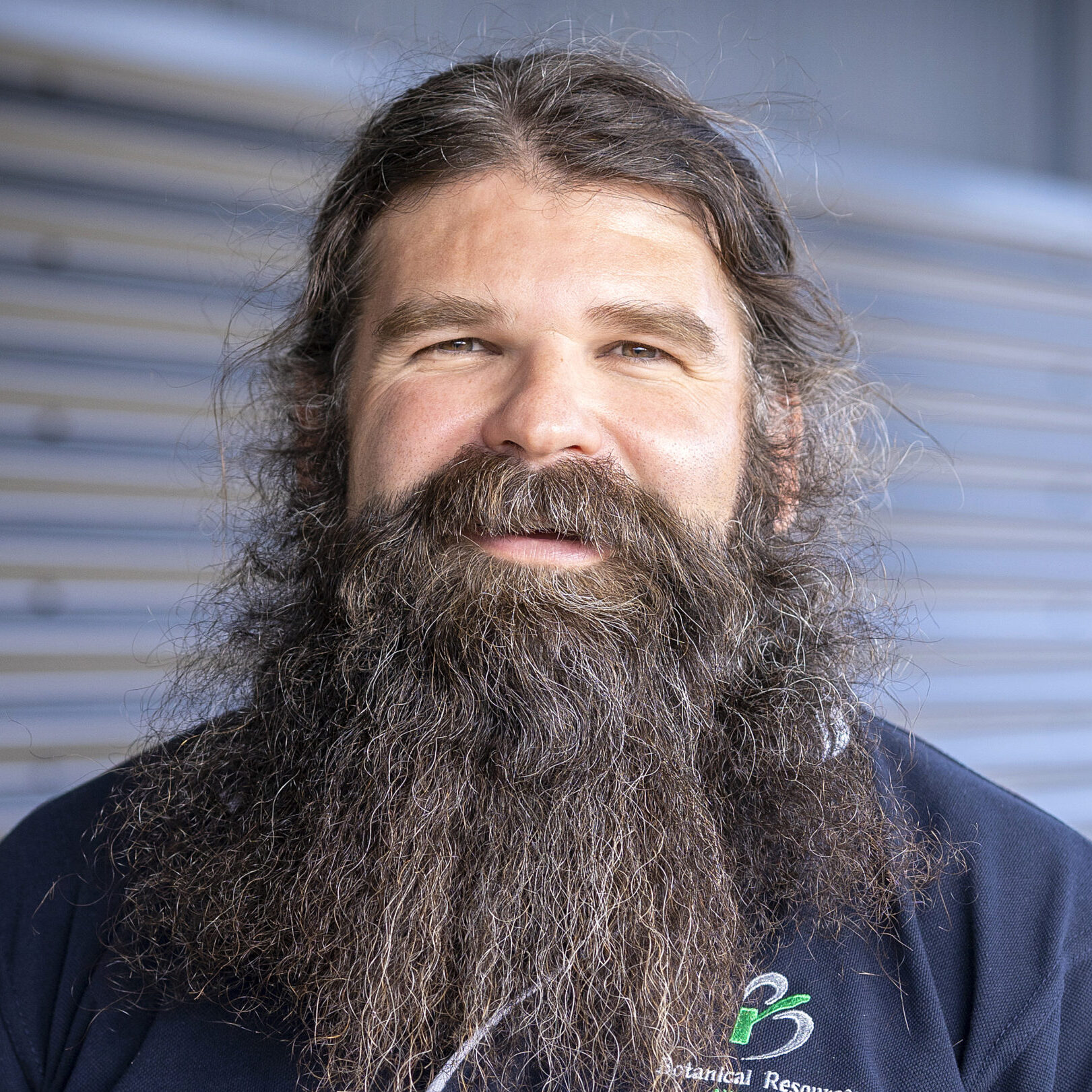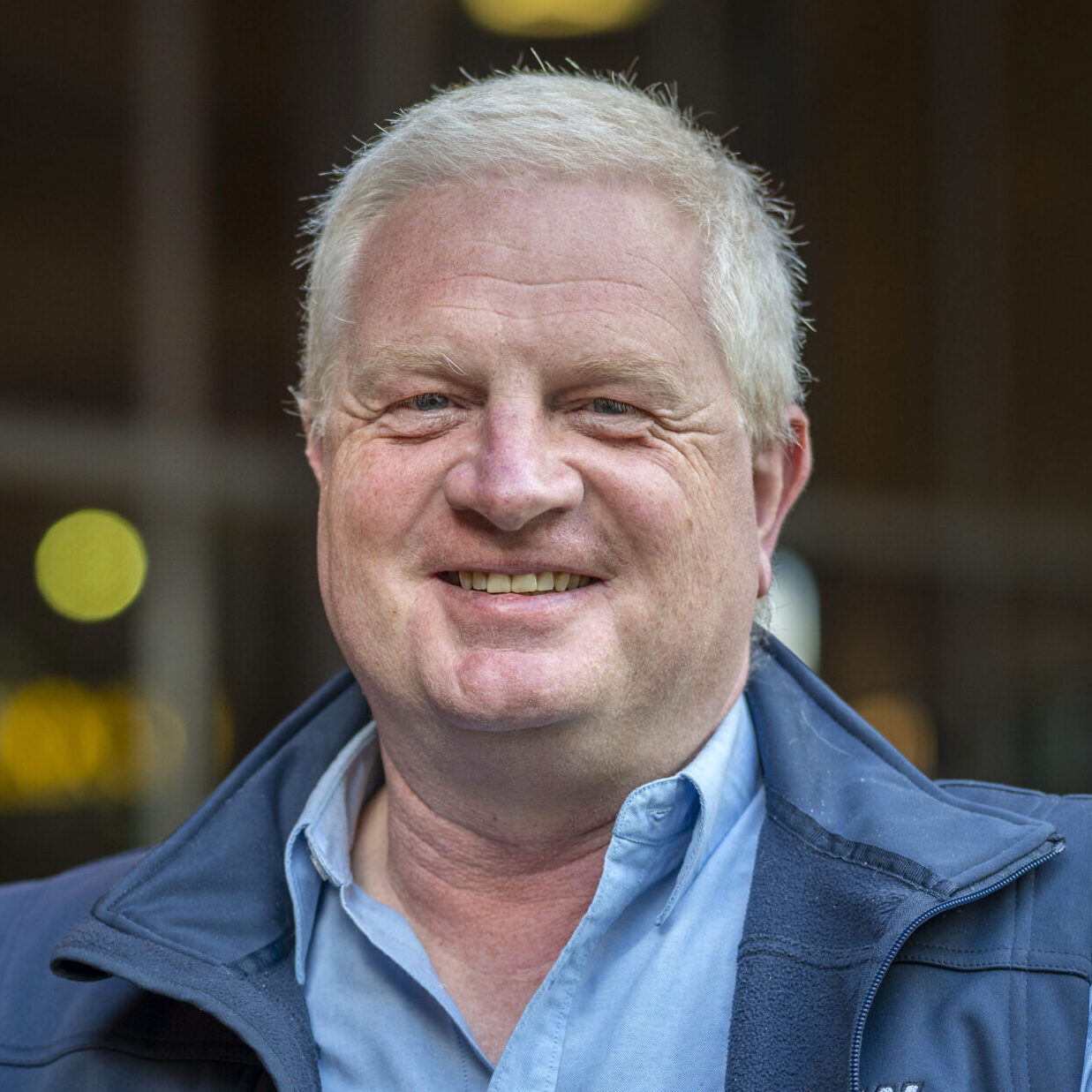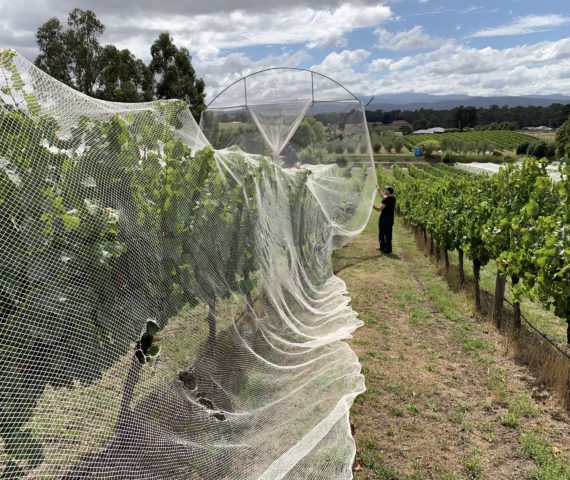
Drone swarm bird deterrant
At Jinglers Creek Vineyard, nylon nets are used to protect ripening fruit from losses to birds. Applying nets requires a team of people, a tractor and approximately two square kilometres of polyester netting, which is replaced every seven years.
The Project
The project addressed two key activities that are the most labour intensive: applying nets; and operating the complex irrigation system.
Objectives
- Explore the use of drones and related technology to reduce crop losses to birds.
- Assess the irrigation system on-site and increase efficiency of current infrastructure.
Targets
- Eliminate the need for nets.
- Optimise water usage with current infrastructure.
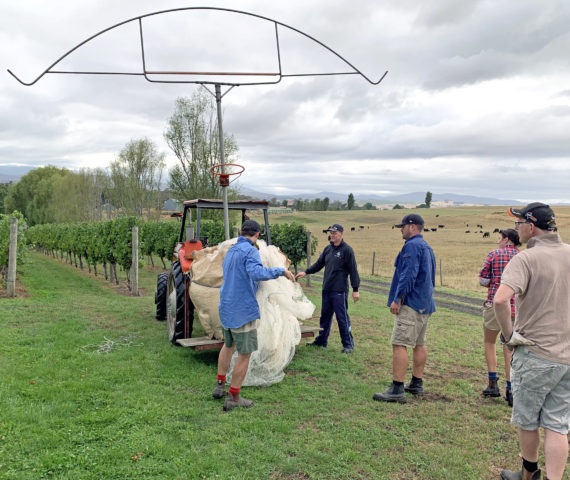
Nylon nets protect the ripening fruit from losses to birds. A team of workers applies the nets each year, just prior to fruit ripening, and removes them for harvest.
Outcomes
What was implemented?
- We built three drones and used swarm technology, with an autonomous ground vehicle, to demonstrate proof-of-concept.
Key issues
- Our business is seasonal, limiting our opportunities for testing our solution. We overcame this by collaborating with other vineyards to conduct trials.
- Finding the right technology and the right partners; we established a commercial relationship with a developer overseas for the swarm technology.
- CASA regulations were a compliance barrier as our vineyard is located close to Launceston airport.
Performance against targets
- Demonstrated proof-of-concept and will undertake another pilot this summer, which will ultimately lead to the elimination of nets, not only for us but hopefully other vineyards and across other industries, eg berry farms.
- We are currently seeking funding to build more drones and scale up following the pilot.
Lessons Learnt
- Understanding waste and what happens to it – we know now that our nylon nets cannot be recycled in Tasmania and that our empty bottles are effectively going to landfill.
- How much office politics, corporate culture, and our actions as a country, create barriers to achieving greater resource efficiency.
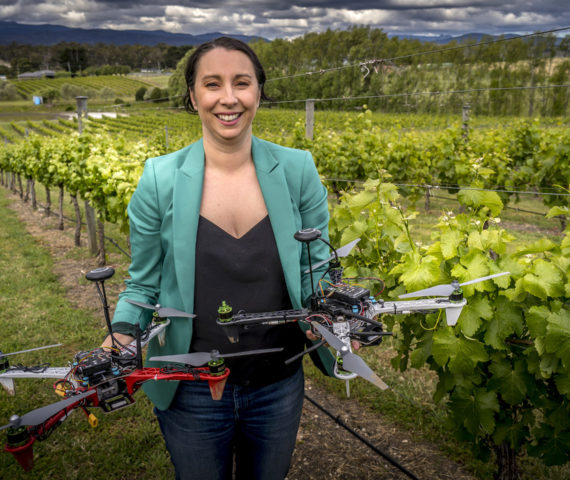
Swarm technology was used to replicate defensive bird behaviour with drones to deter birds from approaching the vines.

Fiona Turner
Vigneron
